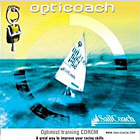 The PS10 project, is an 11 MW Solar Thermal Power Plant 15 km west of the city of Seville in Southern Spain.
The PS10 project, is an 11 MW Solar Thermal Power Plant 15 km west of the city of Seville in Southern Spain.The plant is the first Solar Central Receiver System of its kind and generates 11 Megawatts (MW) of electricity, enough to power up to 6,000 homes although it is expected that when the entire project is completed it should generate enough electricity to cover the needs of the 600,000 population of Seville.
It works by concentrating the reflected rays from each of the 624 mirrors with a mobile curved reflective surface measuring 120 square meters to the top of a 115 meter where a solar receiver turns water into steam. The turbine drives a generator, producing electricity.
 Compared to conventional flat panel solar cells, concentrating photovoltaics is more cost efficient because the solar collector is less expensive than an equivalent area of solar cells.
Compared to conventional flat panel solar cells, concentrating photovoltaics is more cost efficient because the solar collector is less expensive than an equivalent area of solar cells.Concentrating photovoltaics operates most effectively in sunny weather, since clouds and overcast conditions create diffuse light which essentially can not be concentrated.
The PS10 solar power plant is promoted by Solúcar Energía, an Abengoa Group company.
This project has counted with the co-funding from the 5th European Union Framework Program. Activities of Solgate Technology are still continuing today, with the presence of Solúcar R&D in the Solhyco Project which intent to obtain the hybridization of the system developed on the Solgate stage with gasified biomass. The Solhyco Project counts with the collaboration of renowned research centers such as DLR and Ciemat, and which has been co-funded under the 6th European Union Framework Program.
Because concentrating photovoltaics perform better in environments with clear skies, Europe is also looking across the Mediterranean to the Sahara desert, where solar farms could provide clean electricity for the whole of Europe, according to EU scientists working on an scheme to build a €4.500.000 European supergrid that would allow countries across the continent to share electricity from abundant green sources.
In addition, because the sunlight in this area is more intense, solar photovoltaic (PV) panels in northern Africa could generate up to three times the electricity compared with similar panels in northern Europe.
Arnulf Jaeger-Walden of the European commission's Institute for Energy, speaking at the Euroscience Open Forum in Barcelona, said it would require the capture of just 0.3% of the light falling on the Sahara and Middle Eastern deserts to provide all of Europe's energy needs.
Jaeger-Walden explained how electricity produced in solar farms in Africa, each containing power plants generating around 50-200MW of power, could be fed thousands of miles across European countries by using high-voltage direct current transmission lines instead of the traditional alternating current lines. Energy losses on DC lines are far lower than AC ones where transmission of energy over long distances is uneconomic.





























0 comments: